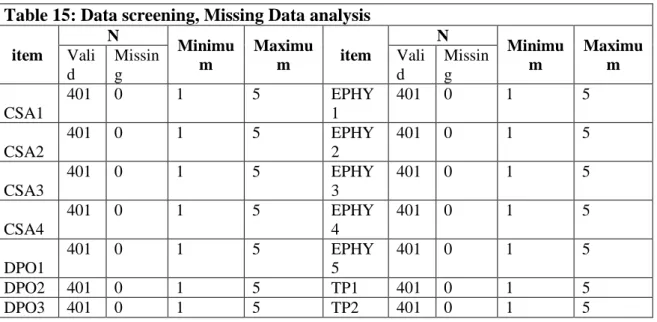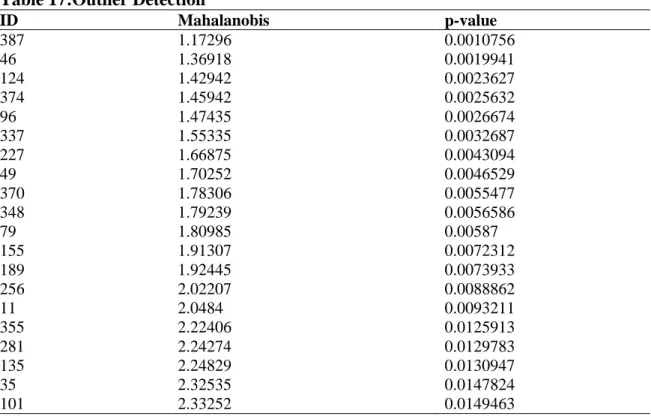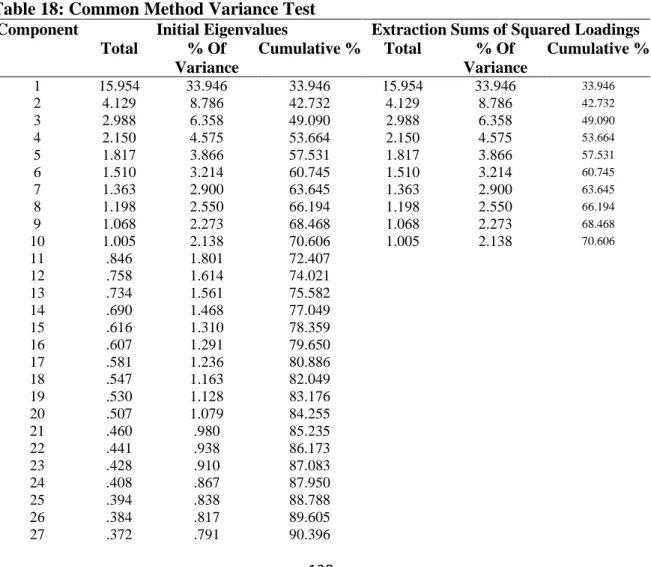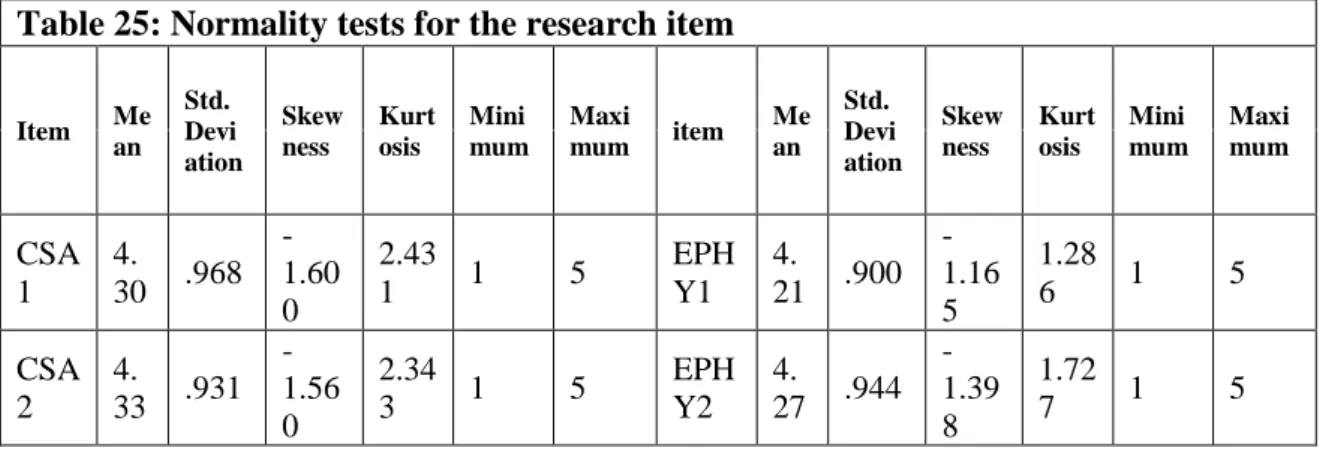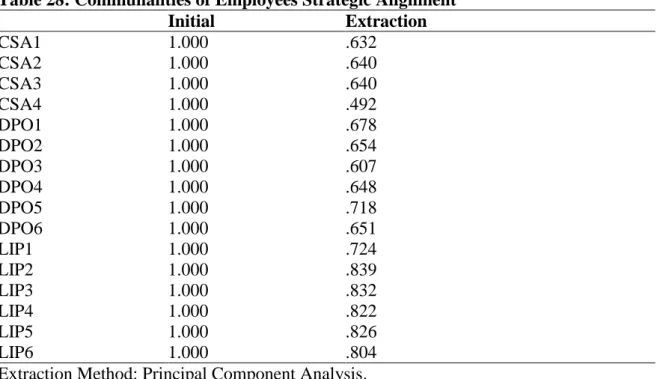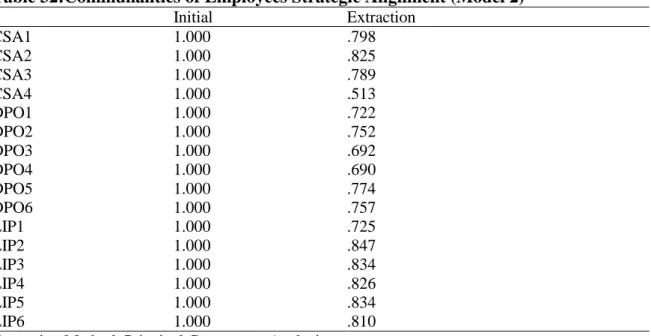I understand that The British University in Dubai may make a digital copy available in the institutional archive. Special thanks go to the faculty members of The British University in Dubai for their support over the years of study.
Research Context and Background
Recently, academic attention has been focused on employee engagement and its impact on organizational outcomes (Frino et al., 2019). In addition, many previous studies have demonstrated the significant impact of employee engagement on performance (e.g. (Ismail et al., 2019) and (Eldor & Harpaz, 2016).
Purpose and Objectives of the Research
To examine the level of employee performance (task, contextual and counterproductive performances) in the government and semi-government organizations in the UAE. To examine the mediating impact of employee engagement on the relationship between employees' strategic alignment and employees' performance.
Problem statement
Therefore, investigating employee engagement creates an inclusive understanding of the impact of alignment on employee behavior and emotions and how it affects employee performance (Alagaraja & Shuck, 2015). Finally, this research aims to introduce a linking variable to examine the direct and indirect relationship between strategic alignment and employee performance and the impact of employee engagement in government and semi-government organizations in the UAE.
Research Questions
AQ2.3: What is the impact of linking incentives and benefits to performance on employee performance. AQ3: What is the role of employee engagement in the relationship between strategic alignment and employee performance.
Research Strategy
RQ2.2: What is the impact of setting personal objectives based on strategic goals on employee performance. Since this is the most appropriate methodology to carry out this research and achieve its objectives, this approach is followed.
Research Contributions
Theoretical Contributions
This study examines the relationship between employees' strategic alignment on employee performance and the mediating role of employee engagement. Additionally, this study contributes significantly to the worker performance literature by adopting the Koopmans framework (i.e., Task, Contextual, and Counterproductive performance) and comparing the impact of employee strategic alignment on each type.
Practical Contributions
Thesis structure
It starts with the research context by briefing the research variables and introducing them within the context of the UAE and specifying the purpose of the research, followed by the introduction of the research problem. It is organized as follows; first a literature review of the research variables will be presented, then the theoretical framework and finally the chapter on hypothesis development which will be developed based on the literature review and theoretical background.
Employee Performance
- Task Performance
- Contextual Performance
- Counterproductive Work Behaviour
- Employees performance in the UAE
Counterproductive work behavior is related to the actions that harm the organization's well-being (Koopmans, et al., 2013). It represents the employee's responsibility to participate in the organization's activities and their concern for the organization (MacKenzie, et al., 1998).
Employee’s Strategic Alignment
Alignment
Finally, environmental fit emphasizes the strategic fit of the organization's vision, goals, and tactics to the external environment (Alagaraja & Shuck, 2015). Internal alignment fit between the organization's business strategy and internal variable (Prieto & de-Carvalho, 2018) Goals align the mutual idea of the preferred outcomes linked to the higher order.
The Importance of Employee’s Strategic Alignment
Communication of strategy between various employee levels increases the employees' ability to understand the organization's strategic goals. This step is measured by the percentage of the staff whose goals and rewards are linked to the organization's goals, and this step is called "strategic alignment."
The Principles of the SFO Model
- Principle One: Translate Strategy into Operational Term
- Principle Two: Align the Organisation to the Strategy
- Principle Three: Make Strategy Everyone’s Everyday Job
- Principle Four: Make Strategy a Continual Process
- Principle Five: Mobilise Change through Executive Leadership
In their BSC model, Kaplan & Norton (2006) created a strategy map that shows the organization's high-level objectives and how they are interconnected through the four aspects of the BSC. Previously, aligning employees with the organization's strategy was unnecessary; employees needed less knowledge about the organization's strategy.
Employee Strategic Alignment Dimensions (Make Strategy Everyone’s Everyday
- Creating Strategic Awareness
- Defining Personals and Team Objectives
- Linking Incentives and Compensation to Achieving Organisational Goals
A crucial element to achieve and maintain this: alignment depends on whether employees have a point of view to the organization's strategic goals or not (Boswell, et al., 2006). The performance indicators should therefore make sense to the employees and be linked to the core of the organization (Prieto & de-Carvalho, 2018).
Employee Engagement
Engagement Dimensions
- Physical Engagement
- Emotional Engagement
- Cognitive Engagement
Cognitive engagement is attention to and absorption in the work (Ongore, 2014). Khan, 2019) describes cognitive engagement as employees' intense focus on their work tasks, leading to complete absorption and resistance to distractions. Employees with high cognitive engagement focus on their work and can easily ignore distractions (Khan, 2019).
Theoretical Background
Goal Setting Theory of Motivation
Motivation is a trait found in engaged employees and leads to organizational effectiveness; therefore, goal setting can lead to employee engagement. Goal setting and appropriate feedback have been linked to a set of cognitive variables that in turn predict performance (Kuvaas, 2007) and form a reliable performance management system associated with employee goal setting to increase employee engagement (Mone & London, 2021).
Job Demand –Resources (JD-R) Model
Engagement Theories
The following diagram (Figure 7) represents the JD-R model, where the relationship between strategic alignment, employee engagement and organizational performance is clearly shown. Safety refers to the perception that the work environment is encouraging and trustworthy (Upadhyay & Palo, 2013); in other words, how safe it is for the employee to do so (Kahn, 1990).
Hypotheses Development
- Employee Strategic Alignment Impact on Employee Performance
- Employee Strategic Alignment Impact on Employee Engagement
- Employee Engagement Impact on Employee Performance
- Employee Engagement mediates the relationship between Employee’s Strategic
H2, c: Linking incentives and compensation to the achievement of organizational goals (LIP) has a significant positive impact on employee engagement. The research developed a conceptual model linking performance measurement and management to employee engagement and performance.
Conceptual Framework
To examine the extent to which employee engagement and self-efficacy have independent and cumulative effects on individual job performance. In addition, the research found that employee engagement affects performance depending on the type of task, with highly engaged employees able to perform tasks that require devotion better.
Chapter Conclusion
The research design and data analysis plan should have a precise methodological path based on the research objectives and framework.
The Research Design
- Research Philosophy
- Research Approach
- Methodological Choice
- Research Strategy
- Research Time Horizon
Pragmatism holds that the research question is the most crucial determinant of the acceptance of epistemology, ontology and axiology (Saunders, et al., 2007). Triangulation means getting data from multiple sources to ensure that the data informs what the research is supposed to acknowledge (Saunders, et al., 2007).
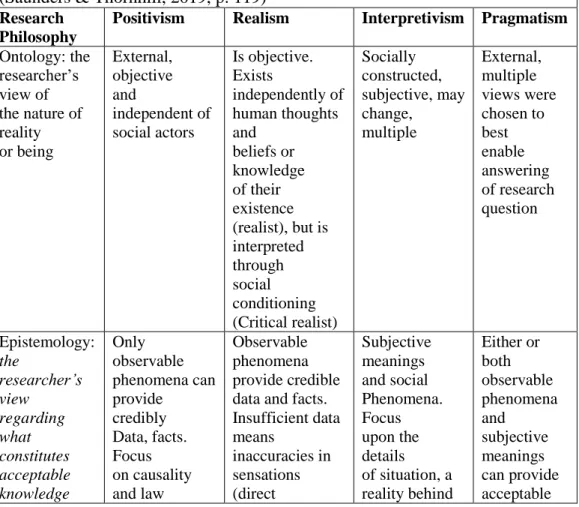
Techniques and Procedures
Sampling Techniques
Probability sampling means that each case in the population has an equal chance of being selected into the sample ((Saunders, et al., 2009); (Black, 2019)). Probability sampling requires a complete list of the cases from which the survey sample is drawn; this will be discussed in the following section.
Research Population and Sampling
Another way to calculate the minimum required sample size is to use the confidence interval, margin of error and proportion (Saunders, et al., 2007). Another example of a sample size calculation equation is one that contains ratios as in equation (2) in this equation and population size is not required (Saunders et al., 2007).
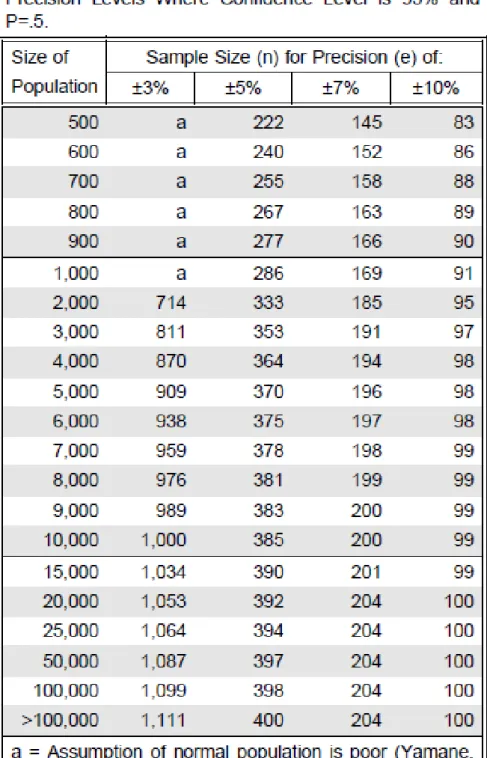
Data Gathering Tool
According to (Rowen, et al., 2019), online data collection is gaining popularity over the paper-based conventional process. In addition, the online data collection method guarantees no data entry errors, as the data can be extracted, and some features force respondents to answer all questions, eliminating the problem of missing data (Ebert, et al., 2018).
Research Instrument
Independent Variable
- Creating Strategic Awareness
- Defining Personal and Team Objectives
- Linking Incentives and Compensation to Achieving Organisational Goals . 115
Respondents rate their agreement with each item on the scale using a five-point Likert scale rating, where (1) means "Strongly Disagree" and (5) means "Strongly Agree". Furthermore, they tested the scale using confirmatory factor analysis; the results provided a good fit as three separate items as a single scale.
Dependent Variable
CtextP2 I took on challenging tasks when they became available CtextP3 I tried to keep my work-related knowledge up to date CtextP4 I tried to keep my work skills up to date. CtextP7 I was constantly looking for new challenges in my work CtextP8 I actively participated in meetings and/or consultations.
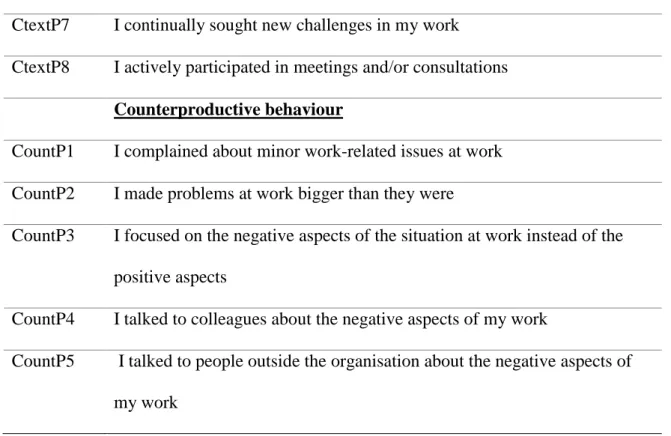
Demographic
No Arabic translation is needed for the questionnaire, as all the employees working in the Dubai government entities can read and understand and provide answers to questions in English. Accordingly, in this research the demographic questions included in the questionnaire are the respondent's gender, years of experience, age and designation.
Validity and Reliability (Pre-Data Collection)
- Handling Missing Data
- Outliers
- Validity and Reliability (Post Data Collection)
- Descriptive Analysis
- Bivariate and Multivariable Analysis
- Correlations
- Regression
- Mediation Test
The last technique that was used is shape measures which are used to describe the shape of the data set. Correlations are "a measure of the degree to which variables are related." The r statistic is the person product-moment coefficient, and r is the measure of linear association between the variables.
Pilot Testing
The questionnaire was sent to (40) respondents who were not part of the final research sample. Thus, the final respondents are not encountering any problem in answering the questionnaire, improving the reliability and validity of the collected facts.
Anticipated Results
The JD-R model believes that resources such as clarity about the organization's mission, rewards and recognition, and providing clear, meaningful goals can lead to increasing employee motivation, and consequently employee performance and create positive feelings that result in employee engagement (Bakker & Demerouti, 2007). Based on this, it is expected that there will be a positive relationship between the research variables and that each of the employee strategic alignment dimensions, based on the SFO model, will have an impact on employee engagement and performance (task performance and contextual performance ) and causes a negative impact on counterproductive behavior.
Ethical Consideration
Chapter Conclusion
Survey Data and Response Rate
- Data Screening and Checking and Replacing Missing Values
- Negatively Worded Items
- Test of Outliers
- Common Method Variance
In univariate outlier detection, each item in the questionnaire should be examined, either by using graphical methods such as box and plot or by standardizing the responses and comparing them with cut points (Hair, et al., 2010). Harman's single factor test is one of the most widely used methods to detect CMV (Fuller, et al., 2016).

Demographics Analysis
As can be seen from Table (23), most of the sample has a total experience of more than (10) years in various organizations, with (259) respondents, constituting (64.6%) of the sample. As can be seen from Table (24), the research sample consisted mainly of bachelor degree holders, with (207) respondents demonstrating (51.6%) of the sample.

Exploratory Factor Analysis (EFA) and Confirmatory Factor Analysis (CFA) for the
Exploratory Factor Analysis (EFA)
Bartlett's test should be significant for the data to be considered suitable for the EFA test (p < 0.05). If an item loaded on two constructs with loading differences of less than 0.20 or a ratio greater than 75%, the item should be removed.
Confirmatory Factor Analysis (CFA)
Comparative fit indices (CFI) assess the model's fit relative to a more constrained model, and the CFI value should be close to one. Furthermore, (Hair, et al., 2010) states that no strict thresholds should apply to all research cases.
Convergent and Discriminant Validity
Normality Check for the research Items
The previous table (25) presented skewness and kurtosis values for all the questions in the questionnaire (47); points, it can be seen that most of the subjects' skewness and kurtosis values fall between the required limits to be considered normal, except for a few values, e.g. (CSA4) was the kurtosis value (6.889), which indicates that the normal distribution for this record is more peaked than the normal distribution. The plots show that the goods' data can be considered to follow a normal distribution, as the data points fall on the slanted line.
EFA and CFA for the Measurements of Employees' Strategic Alignment
Convergent and Discriminant Validity for Employees Strategic Alignment
The value of (1.00 indicates the correlation between the variable and itself aw replaced by the square root of AVE to facilitate the assessment of discriminant validity). The correlation table was produced to assess the discriminant validity; this is done by evaluating the correlation of the items against the square root of the AVE.
EFA and CFA for the Measurements of Employees Engagement
- Three-Dimension Model (1)
- Three-Dimension Model (2)
- One-Dimension Model
- Convergent and Discriminant Validity for Employees Engagement
The employee engagement agreements are shown in Table (41); to consider a good item, the value of the matches must be > (0.20). The employee engagement agreements are shown in table (45); to consider a good item, the value of the matches must be > (0.20).

EFA and CFA for the Measurements of Employees' Performance
Convergent and Discriminant Validity for Employees Strategic Alignment
CFA for the Research Measurement Model
Descriptive Statistics and Correlations for the Research Variables
Hypotheses Testing
Testing Hypothesis One
Testing Hypothesis Two
Testing Hypothesis Three
Testing the Mediation Impact
Chapter Four Conclusions
Descriptive Statistics Discussion
Employees' Strategic Alignment Has a Significant Positive Impact on Employee's
Employees' Strategic Alignment Impact on Employees' Engagement
Employee Engagement Impact on Performance
Mediation Impact of Employees' Engagement
Chapter Five Conclusion
Conclusion
Theoretical Implications
Practical Implications
Research Limitations
Future Research
Chapter Six Conclusion
